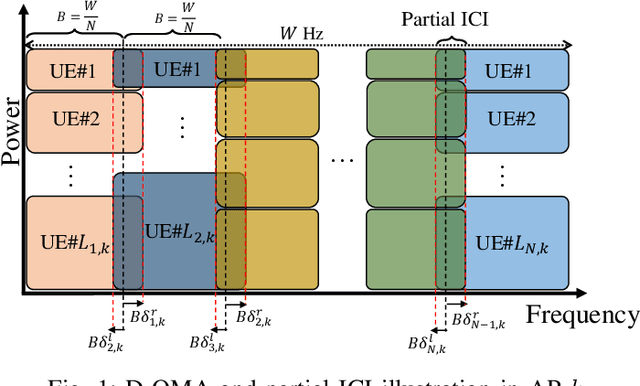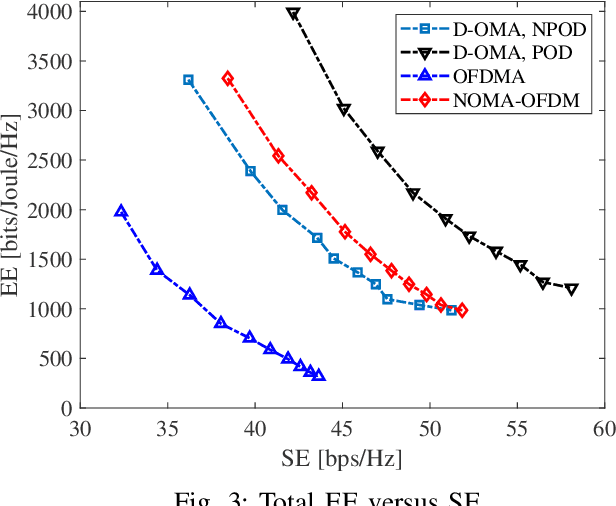Energy Efficiency Maximization in the Uplink Delta-OMA Networks
Paper and Code
Mar 15, 2021



Delta-orthogonal multiple access (D-OMA) has been recently investigated as a potential technique to enhance the spectral efficiency in 6G networks. D-OMA enables partial overlapping of the adjacent sub-channels that are assigned to different clusters of users served by non-orthogonal multiple access (NOMA), at the expense of additional interference. In this paper, we analyze the performance of D-OMA in the uplink and develop a multi-objective optimization framework to maximize the uplink energy efficiency in a multi-cell network enabled by D-OMA. Specifically, we optimize the subchannel and transmit power allocations of the users as well as the overlapping percentage of the spectrum between the adjacent sub-channels. The formulated problem is a mixed binary non-linear programming problem; therefore, we first transform the problem into a single-objective problem using Tchebyshev method. Then, we apply the monotonic optimization (MO) to explore the hidden monotonicity of the objective function and constraints, and reformulate the problem into a standard MO in canonical form. The re-formulated problem is then solved by applying the outer polyblock approximation method. Our numerical results show that D-OMA outperforms the conventional non-orthogonal multiple access (NOMA) and orthogonal frequency division multiple access (OFDMA) when the adjacent sub-channel overlap and scheduling is optimized jointly.
 Add to Chrome
Add to Chrome Add to Firefox
Add to Firefox Add to Edge
Add to Edge